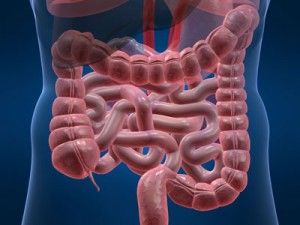Appendectomy (Appendicitis)
 The appendix is a blind-ending pouch that originates from the first part of the colon, known as the cecum. The normal appendix has no defined function in life. The most common disease to affect the appendix is appendicitis (inflammation of the appendix). When the appendix becomes obstructed, it becomes swollen and inflamed. Untreated, this condition can perforate or rupture. The most common reason for appendicitis is due to an obstructing fecalith (“stool ball”) or garden variety intestinal infection. Less commonly, various tumors can grow in the appendix. You should expect to live a completely normal life after surgical removal of the appendix.
The appendix is a blind-ending pouch that originates from the first part of the colon, known as the cecum. The normal appendix has no defined function in life. The most common disease to affect the appendix is appendicitis (inflammation of the appendix). When the appendix becomes obstructed, it becomes swollen and inflamed. Untreated, this condition can perforate or rupture. The most common reason for appendicitis is due to an obstructing fecalith (“stool ball”) or garden variety intestinal infection. Less commonly, various tumors can grow in the appendix. You should expect to live a completely normal life after surgical removal of the appendix.
Appendicitis Symptoms
Signs of Appendicitis
- Pain that starts around your navel (belly button) and moves to the lower right side of the abdominal wall.
- Increased pain and pressure on your side when you walk or try to stand up straight.
- Nausea, vomiting, or decreased appetite.
- Fever, chills, or fatigue.
- Diarrhea or constipation.
Workup of Appendicitis
- History and physical exam may be the only test necessary to diagnose appendicitis.
- Laboratory testing may be helpful in certain cases (pregnancy test, urinalysis, blood count).
- X-rays may be helpful in uncertain cases (Ultrasound or CT Scan).
Appendectomy
If diagnosed with appendicitis, surgery is the best option as medications cannot cure appendicitis. We prefer a minimally invasive technique for removing the appendix called laparoscopy. A small incision will be made beneath the belly button and a tiny video camera called a laparoscope will be inserted. Two additional small incisions will be made for the additional operating instruments, unless you are a candidate for SILS (Single Incision Laparoscopy). The blood vessels to the appendix will be sealed off and the appendix removed from the colon with a stapling device. The appendix is placed into a sterile bag and removed from your navel. This procedure usually takes 30 to 45 minutes. The incisions are closed with dissolvable sutures and covered with steri-strips or skin glue. Scarring and recovery are minimal.
An open (or traditional) operation may be required in certain circumstances (ruptured appendix or later in pregnancy to name a few). In this case, a single larger incision on your lower right side is created and the appendix will be removed through that space. There are also some cases where the procedure may start using the laparoscopic method and cannot be safely completed because of difficult anatomy or unsuspected findings. These special cases would be converted to a traditional (or open) method at that time. After this procedure, the incision will be closed with sutures or staples.
Getting Back to Normal
- In most cases you will be able to return home the same day or the following day in uncomplicated cases. In cases of perforated appendicitis, you may need to spend additional time in the hospital for delayed intestinal recovery or intravenous antibiotic therapy.
- You will be able to slowly resume your normal diet and activities.
- You will be given pain medication to take at home.
- Avoid strenuous activity and heavy lifting for the first week after your surgery. In laparoscopic cases, you may resume normal activity without restrictions in 2 weeks.
- Please be sure to schedule a post-op appointment 7-14 days after your surgery, so the doctor can evaluate your recovery progress.
